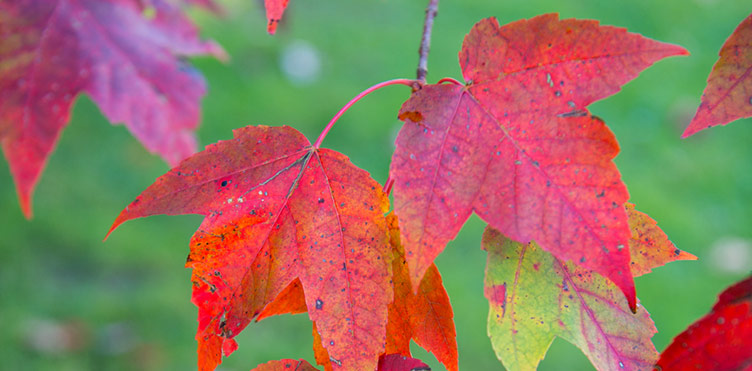Sustainable grounds

Our UNB Fredericton campus contains several sustainable grounds features including three wildlife friendly gardens, a medicine wheel garden, and three tree trails.
Wildlife friendly gardens
In collaboration with Nature NB, a local non-profit, UNB created three Wildlife Friendly Gardens on the UNB Fredericton Campus. UNB provided youth and the campus community with the opportunity to engage in on-the-ground initiatives that help protect and conserve habitat. College Hill Daycare and UNB Early Childhood Centre participated in the planting of the wildlife friendly plants. These gardens provide appropriate habitat for wildlife and are also a great education tool that are highlighted yearly during sustainability walks on the campus grounds.
The gardens are located adjacent to Bailey Hall, IUC Forestry and Memorial Hall on the Fredericton Campus.
First Nations medicine wheel garden
In collaboration with the UNB Fredericton Mi’kmaq-Wolastoqey Centre Elder-in-Residence, Imelda Perley, a medicine wheel garden was planted in hounor of residential school survivors. The garden features traditional First Nation’s plants used for medicinal purposes. All parts of the garden have a particular connection to First Nations culture and practices.
The Garden is in the shape of the traditional First Nations Medicine Wheel. Children from local Frist Nation’s communities assisted in the creation of the cultural garden that is used as a teaching tool by the centre.
Interactive tree trail
The interactive tree trail was developed in collaboration with the Faculty of Forestry and Environmental Management, and is a part of our UNB Sustainability map. The interactive tree trails allow individuals to connect with nature, explore the benefits provided by trees, and provide information on how to identify different species. Through the virtual tree tour, you can find examples of tree species on the University of New Brunswick Fredericton campus, see detailed pictures, and learn interesting facts.
At each tree location there is information signage with a bar code that will link to a website that provides information about each tree. In order to access tree information, a bar code reader on a digital device is required.
Acadian forest tree trail
Do you know your Acadian forests tree species? Take a walk through campus and test out your knowledge.
The Acadian Forest is one of eight forest regions in Canada, it covers most of the Maritime Provinces, northern New England and extends into Quebec’s Gaspé Peninsula. Although classified as a distinct region, it is actually a combination of the Northern Hardwood and Boreal forests; the Acadian Forest contains elements of both, thus creating a unique blend of hardwood and softwood trees found nowhere else on earth (Simpson, 2008).
The Acadian Forest began to develop when the glaciers, which covered much of North America, began to retreat over 10,000 years ago. As the ice melted, species of plants and animals began migrating northward, including spruce and birch. Because our Maritime climate still maintains a moderately cold winter, our area is able to maintain a wide variety of trees, shrubs, and wildflowers.
The Acadian forest is home to 32 native tree species, and range from very young saplings to old mature trees. Each tree at any age plays a vital role in this forest, and all help to keep the woodland healthy and strong.
Canada's provinical tree trail
Do you know which trees represent each of our provinces and territories? Take a walk through campus and test out your knowledge.
While the international community might recognize the maple leaf as a national Canadian symbol, the individual provinces and territories all maintain a tree that represents their province. Since our provinces and territories of Canada stretch from the Pacific Ocean to the Atlantic Ocean, and extend from temperate climates to the northern Arctic habitats it leaves behind a rich diversity of trees in their paths.
** Some of the Provincial and territorial trees are missing from this list due to their inability to grow well in our local eco-zone**
